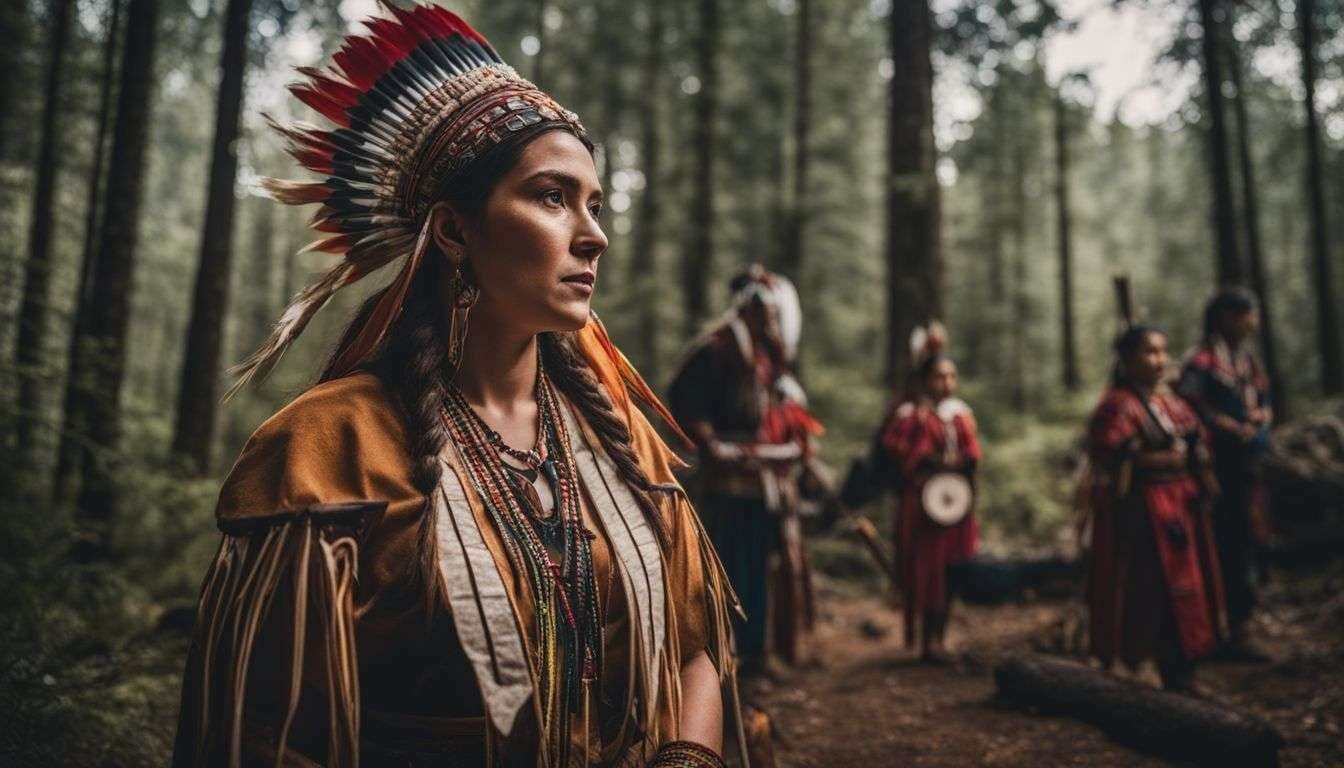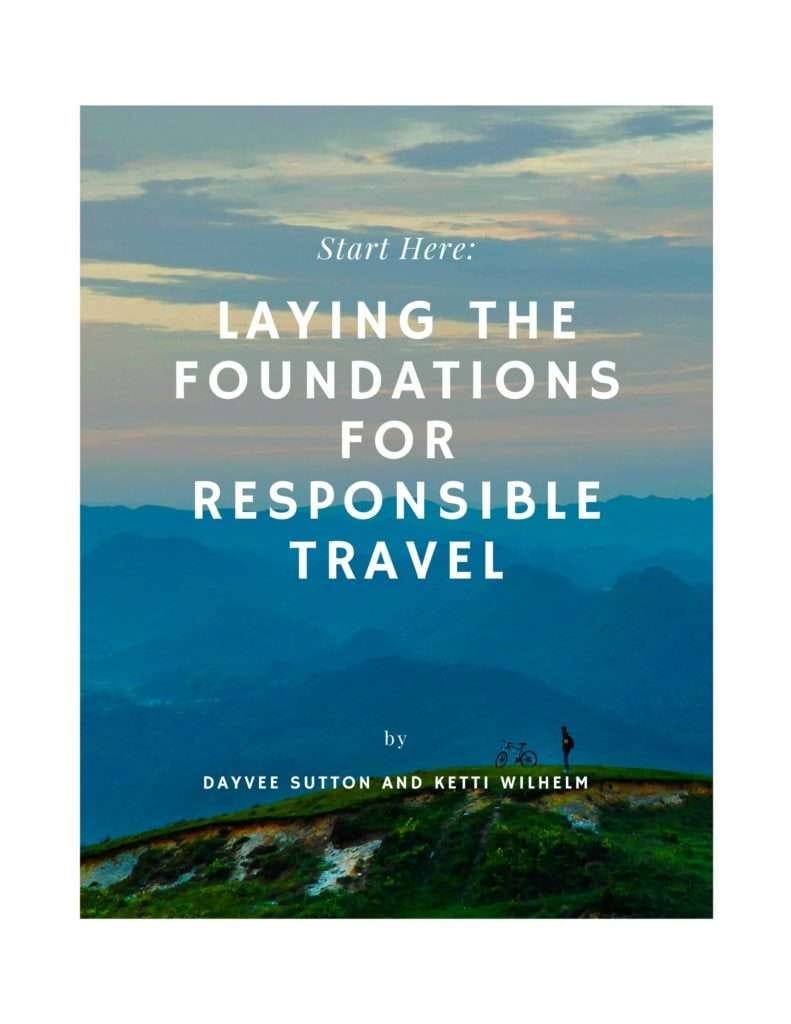
When we travel acknowledging the land we travel through may often slip our minds, yet it holds deep significance.
This article will guide you on how to create meaningful acknowledgments that go beyond mere formality and truly honor native histories and communities. Discover respect in recognition—keep reading.
Key Takeaways
- Land acknowledgments are statements that recognize and respect the original stewards of the land.
- Genuine land acknowledgment involves learning about Indigenous communities’ histories, cultures, reflecting on colonial impacts, and understanding ongoing struggles.
- To avoid empty gestures, actively engage with Indigenous peoples by supporting local businesses, attending cultural events, and taking action to uphold their rights.
- Crafting a meaningful statement includes consulting with local Tribes for guidance and including personal commitments to support Indigenous sovereignty in your actions.
- Real impact goes beyond words; it requires consistent recognition, respect for indigenous culture and rights, and active efforts that contribute to positive change.
Understanding Indigenous Land Acknowledgment

Indigenous land acknowledgment isn’t just a polite gesture; it’s a powerful statement of recognition and respect for the original stewards of the lands we travel. For example the Squaw Valley Ski Resort is now rightfully renamed to honor the Washoe Tribe in the region of Newe Sogobia, their ancestral home.
Acknowledging this fact connects you deeply with the history beneath your feet while you’re enjoying the land and invites reflection on how colonialism continues today.
To practice genuine land acknowledgment as a traveler means to go beyond simple words. Whenever there is an opportunity to engage with local Indigenous communities and learn about tribal sovereignty you are now taking an ethical, responsible, and active role in honoring Native American heritage.
Once were realize that every place from Iron Thunderhorse’s Quinnipiac tribe territory to the sacred grounds where Gwich’in people protect manoomin (wild rice) tells a story that deserves recognition—not just as past events but as living cultures still vibrant today.
The Significance of Indigenous Land Acknowledgment

Recognizing the land you visit goes beyond a formality; it’s an expression of cultural respect and acknowledges the rich history of Indigenous peoples who have long-standing connections to these territories.
Land acknowledgments are a step towards correcting the stories often erased by colonization and recognizing that sovereignty was never willingly surrendered by many sovereign nations.
As travelers, engaging with this practice means you’re taking time to reflect on the complex narrative of American Indian communities and their profound relationship with their ancestral lands.
Engaging in land acknowledgment is not just about uttering words; it’s about understanding your presence on traditional territories.
If you really take the time we encourage you to research into treaties broken or taxes imposed that changed lives forever. Acknowledgment can make you more mindful of issues faced by Indigenous groups even to this day—from environmental struggles like those against Line 3 Pipeline to battles for representation and rights.
This conscious act is a starting point for meaningful interactions with local Indigenous persons, supporting them in strengthening ties to their culture and ensuring history recognizes each nation’s unique story.
Guidelines for Crafting an Indigenous Land Acknowledgment Statement

Creating an Indigenous land acknowledgment statement requires thoughtfulness and sincerity. It’s a sign of respect that connects you to the history of the places you visit. Here’s how you can craft a statement that is both meaningful and respectful:
- Start with self-reflection: Consider why acknowledging the land is significant to you as a traveler. Reflect on what it means to honor Native American tribes and their connection to the land.
- Research thoroughly: Learn about the specific Indigenous communities tied to the territory. Use the Native Land map/app (below) to help you identify the people and territory. Understand their history and culture to accurately recognize them in your statement.
- Use appropriate language: Carefully choose words that respectfully acknowledge past dispossession and ongoing relationships with the land. Avoid terms that might be considered dismissive or trivializing of Indigenous experiences.
- Acknowledge displacement: Recognize that many Native Americans were forcibly removed from their ancestral lands. Mention this history when acknowledging whose traditional territory you are visiting.
- Consult local Indigenous communities: If possible, reach out to representatives from nearby Tribes/nations/peoples for guidance on your statement. They can provide insight into what recognition means to them.
- Include commitments for action: Show that your acknowledgment isn’t an empty gesture by outlining steps you’ll take to support Indigenous rights and sovereignty—whether through advocacy, education, or economic contributions.
- Make it personal: Share your own connection to the region or commitment to learning more about its original inhabitants. Expressing sincere interest encourages others to do the same.
Native Land Map
Since we mostly produce video content via travel documentaries, programs, and shows, we have crafted a statement that we post at the end of our videos. Check out that example below:

The Impact Beyond Land Acknowledgment

Land acknowledgments mark a step towards recognizing the historical and ongoing relationship between Indigenous peoples and their traditional territories. However, true impact involves transformational actions that extend beyond mere words.
To make a real difference, you can try to find ways to actively engage with the indigenous communities around you. Support their causes, learn about their challenges, and get involved with groups like the Indigenous Environmental Network.
Transform your acknowledgment into a bridge for meaningful engagement. As travelers who roam through diverse landscapes once stewarded by Native peoples, take it upon yourself to not just recognize but also respect and uphold the rights of these communities.
Patronize Indigenous-owned businesses during your journeys; volunteer time or resources to local tribal initiatives; explore how land-grant universities can work in partnership with tribes they sit on.
These steps authenticate your recognition and catalyze positive change for those whose lands we visit and admire.
The Importance of Continued Recognition and Respect
Acknowledging Indigenous lands and Native American History is a significant first step, but it’s not the last. You should continue to show recognition and respect long after your initial acknowledgment. It’s about consistently talking about the unique histories, cultures, and rights of Indigenous peoples.
Think of it as an ongoing commitment rather than a one-time statement; this approach will help ensure that your acknowledgment doesn’t become an empty gesture.
Making this effort of tribal engagement shows that you’re not just passing through these lands without regard for their original stewards. Engage with local Indigenous communities whenever possible, attend cultural events to deepen your understanding, or support their businesses during your travels.
These actions contribute to a more respectful relationship between travelers and Indigenous people—a critical aspect of responsible tourism that can foster genuine connection and appreciation beyond words spoken at the beginning of a journey.

Responsible Travel 101
Looking for a comprehensive understanding of this topic? Our white paper is meant to answer your top questions on this subject.

